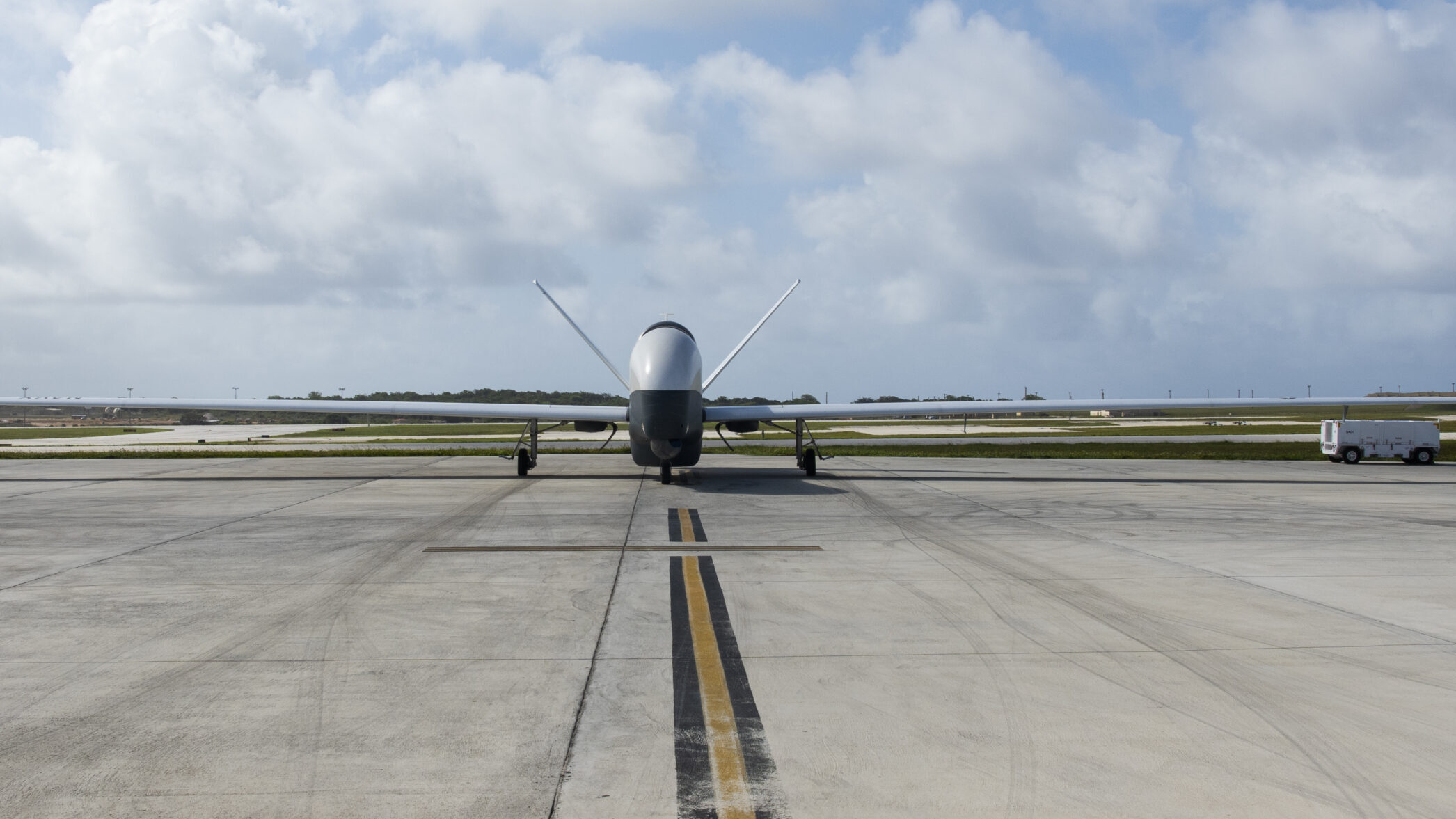
An MQ-4C Triton taxis at Andersen Air Force Base. (U.S. Air Force/Michael S. Murphy)
SEA AIR SPACE 2022: The US Navy and Northrop Grumman have avoided a “strategic pause” originally planned for in the MQ-4C Triton production line through a combination of congressional additions and foreign military sales.
Plans to halt production of Triton, an unmanned maritime surveillance aircraft, were announced in the president’s fiscal 2021 budget request and included halts for both 2021 and 2022. At the time, the service said the breaks were required to give the program office more time to develop capabilities associated with certain configurations for the aircraft.
But neither planned production stop came to pass, thanks to a combination of factors, according to Northrop executive Doug Shaffer. He told reporters Monday that the FY21 pause never happened because Australia ended up buying three Tritons in FY21 and Congress added one aircraft for the Navy’s budget that year. The FY22 pause, he said, was avoided when Congress again added two aircraft beyond the service’s budget request for FY22.
Although the Navy sought a production pause while it developed new capabilities, the supplemental aircraft purchased by Australia and added by Congress effectively kept the production line moving regardless of the Navy’s request. The new capabilities continued to be developed on the sideline and will eventually be worked into the Triton program.
Pausing an active production line always comes with risk for both the Navy and the prime contractor. Those risks include having to lay off and rehire workers, compromise deals on parts or materials ordered in bulk to save money or subcontractors in the supply chain going under due to a lack of work.
Shaffer noted that avoiding the production pauses results in the program avoiding undue costs. “The unit cost is not going through the roof. We’re not losing suppliers. The industrial base is staying intact,” he said.
The president’s new FY23 budget request published last week seeks three MQ-4C Tritons. Shaffer added Northrop Grumman is discussing options with Australia for the country to continue its procurement as well.
RELATED: Show, don’t tell: Navy changes strategy to sell unmanned systems to skeptical Congress
Separately, the Navy is making a second attempt in its new budget request to retire the Broad Area Maritime Surveillance – Demonstrator, an aircraft the service has used for several years now that directly influenced the capability developments made to the MQ-4C Triton. The service sought to retire the aircraft last year but was unable to do so.
The Navy has used BAMS-D, a variant of the Air Force’s Global Hawk, in partnership with Northrop Grumman in order to understand how it would operate an unmanned aircraft that makes extended flights.
“The Air Force had been doing it for a number of years, but not in a maritime environment, not looking at maritime targets, not complete maritime domain awareness,” Rear Adm. Brian Corey, the program executive officer for unmanned aviation and strike weapons, told the same group of reporters. “What that has done is allowed us to get ready for Triton. It’s allowed us to understand how we might use Triton.”
Asked about the reason for the retirement, Corey said his office is not directly responsible for making that decision but that it came down to service leadership making a choice about what activities should be prioritized and what can be terminated.
The Navy in Jan. 2020 deployed two MQ-4C to begin operating from Guam. This past December, Corey said, the service brought one of those planes back to the continental United States.
The reason for that was “maintenance proficiency” and to ensure the service’s operational squadron flying the MQ-4C was prepared to reach initial operational capability, a key acquisition milestone, in August 2023, Corey said.






















